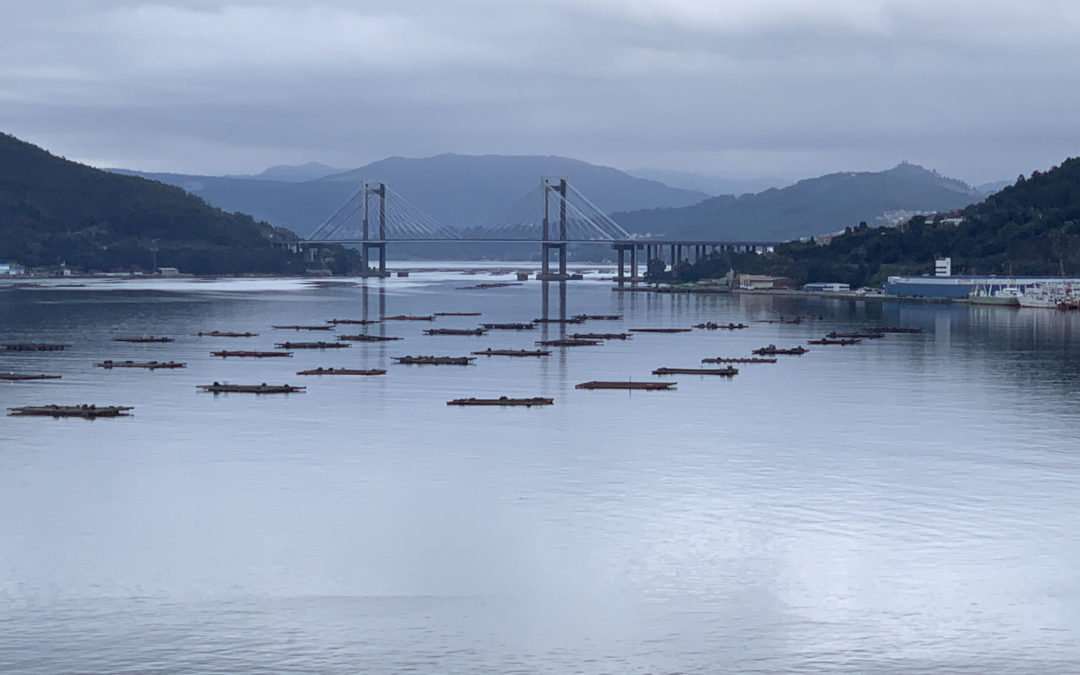
If one should describe the rain of today, torrential is certainly the right expression. According to a phone call with Michael, one of our friends from Cologne, it's all sunshine there. We cannot say this about Santiago de Compostela. Before, I always thought that a rainy night in a van must be romantic. Today I know that it has nothing to do with romance. The rain pelts down on the pop-up roof. Who can still sleep there, has either something at the ears, or like Torgit not something at, but in the ears, in their case Ohropax. - This morning is in any case, against 4:00 o'clock the night to end. From then on it pours like from buckets. And the tent in the pop-up roof is still a tent. Tents are just never completely tight. Then we find two more places where our Hector is not completely tight. - We see it with pragmatism and turn a little on the side.
But around eight we catch the only half hour to clear together. We have planned for today to go further south. Although also in Portugal, more precisely in Porto, rain is announced for the next two days. But what bothers us rain, if we have planned a port wine tasting in Porto?
So we leave Santiago de Compostela, but not without stopping again briefly at the City of Culture of Galicia.
Galicia City of Culture is a complex of cultural buildings designed by a group of architects led by Peter Eisenman. The US American is famous not only for his design of the Holocaust Memorial in Berlin. The construction here is sophisticated and certainly has not been cheap. The design of the buildings is somewhat reminiscent of rolling hills and thus fits into the landscape. Thousands of windows that are part of the exterior facade have an individual shape. What I find most exciting are the natural stone walls in the exterior. Some of these are hidden behind flower beds. An insane amount of coal was sunk back into the earth here. Nevertheless, it looks cool.
On the way south, it rains almost the whole day. But every now and then the sky opens up briefly. We use this time for two stops. The first one lets us linger in Pontevedra. We sit on the banks of the Rio Lerez, have breakfast and watch some kayakers doing their sport. Somehow this place seems to be especially sports enthusiastic. Because those who are not kayaking are jogging through the area.



When it starts to rain again, we decide to drive on quickly. The next time it becomes clearer near Vigo. Here the highway leads over the Puente de Rande, a 152m high cable-stayed bridge. From here one has a wonderful view of the Ría de Vigo and the city. We decide to have a closer look at the sea, the harbor and the strange rafts that can be seen from here. Here we come across Monte Guia, as well as the chapel of the same name on its top. From here you can enjoy a wonderful view of the container port, as well as the Rio Lerez.
The rafts already sighted from the bridge, are a little closer from here, but still about 500 meters away. A brief investigation reveals that they are mussel farms. Already for several generations these Galician mussels are raised in aquaculture. The "rafts, are bateas, floating platforms attached to the bottom. These are made of eucalyptus wood with a side length of 25 meters. To these are attached ropes that carry the mussel fry.



We want to continue, because the sky is already darkening again. Today we go to the Parque de Vila Chã, in the fishing village of the same name about 20 km north of Porto. When we arrive, it is already slightly dusk. Since we are cold, Torgit decides to cook us first a soup. Surely just the right meal for an autumn day like this. We sit satiated in the van, read a little.
Insight of the day: "Soup drives away hunger and cold, comforts the soul, and leaves you with the comforting feeling of being loved."



Recent Comments